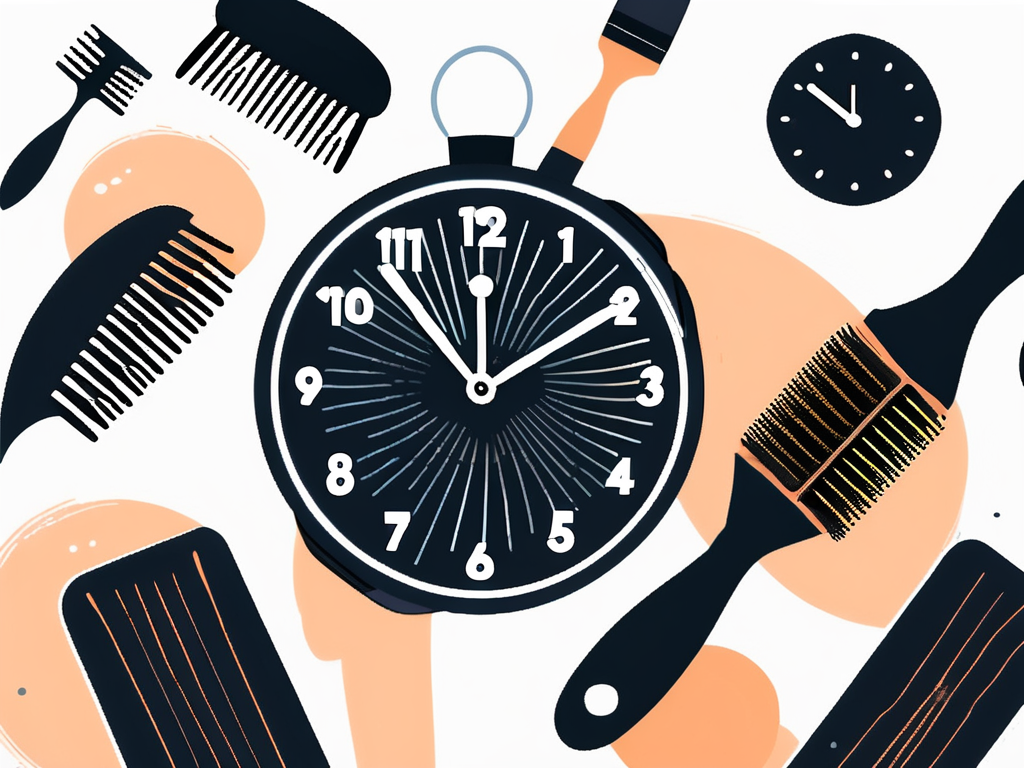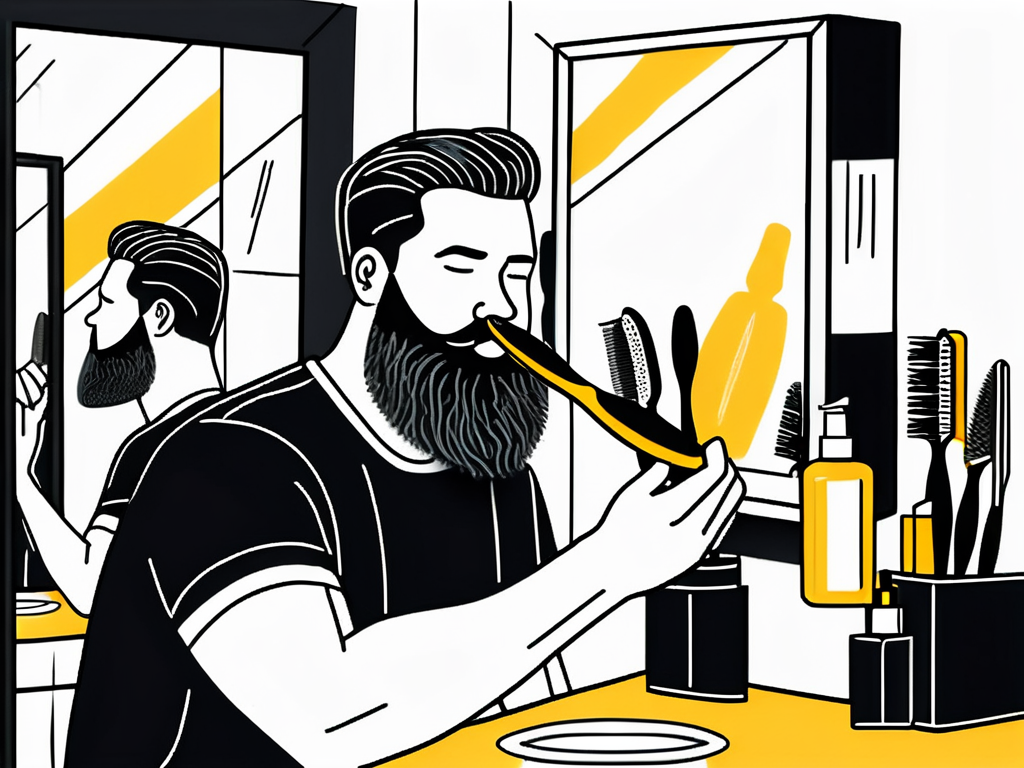How Often Should I Brush My Beard? Must-Read Guide for Every Bearded Warrior
Did you know that brushing your beard regularly not only keeps it neat and tidy but also promotes its overall health?
Whether you're a seasoned beardsman or just starting your beard-growing journey, understanding the importance of beard brushing and determining the right frequency are key to achieving a luscious and well-maintained beard.
In this article, we will show you how often you should brush your beard, and we'll do so by covering these key takeaways:
- Ideal frequency of beard brushing
- Why brushing is an important part of grooming routines
- How to choose the right brush
Determining Your Beard Brushing Frequency - Here's How Often You Need to Do It
While the optimal brushing frequency varies, here are some general guidelines based on common beard types:
-
Short Beards (0-1 inch): Brush 2-3 times a week to keep the hair neat and to train it to grow in the desired direction.
-
Medium Beards (1-3 inches): Brush every other day to maintain shape, prevent tangles, and distribute natural oils.
-
Long Beards (3 inches and above): Brush daily to ensure the beard stays tangle-free, well-groomed, and evenly coated with natural oils or beard products.
Establishing an optimal beard brushing routine is fundamental to nurturing a healthy and aesthetically pleasing facial mane. The frequency with which you brush your beard hinges on several factors, including beard length, texture, and personal grooming goals.
Factors Influencing Brushing Frequency
- Beard length and thickness
- Skin type
- Environmental conditions
- Beard care products used
By considering these factors, you can tailor your brushing routine to meet the specific needs of your beard and skin. However, keep in mind that there are telltale signs that indicate you might be brushing your beard too often or too little.
Signs You're Brushing Your Beard Too Often or Too Little
If you notice any of the following signs, it's time to reassess your brushing frequency:
- Excessive dryness or oiliness
- Increased hair breakage or shedding
- Redness, irritation, or inflammation
- Unruly or tangled beard hair
Now that you have a better understanding of your beard's unique needs, let's explore the world of beard brushes and find the perfect match for your majestic mane!
Incorporating Beard Brushing into Your Grooming Routine
To get the most out of your beard brushing routine, it's essential to incorporate it into your grooming regimen. But let's delve deeper into the world of beard brushing and explore some additional tips and tricks to take your beard game to the next level.
Best Times to Brush Your Beard
While the frequency may vary depending on your beard type, here are some ideal times to give your beard a good brush:
-
In the morning: Brushing your beard after waking up helps remove any tangles or bedhead. It's like giving your beard a refreshing wake-up call, ensuring it starts the day looking its best.
-
After showering: Brushing your beard when it's slightly damp can help distribute any beard care products you've applied. This allows the products to penetrate deeply into the hair follicles, providing maximum nourishment and hydration.
-
Before bed: Brushing your beard before sleep can help remove any dirt or buildup accumulated throughout the day. It also helps to stimulate blood flow to the hair follicles, promoting healthy growth and preventing any potential discomfort caused by tangled hairs.
Pairing Beard Brushing with Other Beard Care Practices
To further enhance your beard's health and appearance, consider incorporating these beard care practices alongside regular brushing:
- Washing your beard with a gentle, beard-specific cleanser. This removes any dirt, excess oil, and product buildup, leaving your beard feeling fresh and clean.
- Applying nourishing beard oil or balm to moisturize your beard and skin. These products provide essential nutrients, prevent dryness, and promote a soft and manageable beard.
- Trimming your beard to maintain the desired shape and length. Regular trims prevent split ends, keep your beard looking neat, and help you achieve your desired style.
- Using a beard comb or boar bristle brush for additional shaping. These tools help tame unruly hairs, distribute natural oils evenly, and give your beard a polished and refined appearance.
Choosing the Right Beard Brush
When it comes to beard brushes, there are a variety of options to choose from. Let's take a closer look at the different types of beard brushes and how to select the right one for your beard type.
It's essential to select a beard brush that complements your beard's specific requirements. For shorter beards, a smaller brush with firm bristles may be more effective in styling and shaping. Longer beards, on the other hand, may benefit from a larger brush with softer bristles to prevent tugging and breakage.
Different Types of Beard Brushes
Beard brushes come in various shapes, sizes, and materials. The most common types include:
-
Natural bristle brushes: Made from boar hair, these brushes are known for their durability and ability to distribute natural oils throughout the beard.
-
Boar bristle brushes: These brushes are great for all beard lengths and types, helping to detangle hair and exfoliate the skin underneath.
-
Synthetic bristle brushes: Ideal for shorter beards and sensitive skin, these brushes are gentle yet effective in styling and shaping facial hair.
-
Combination bristle brushes: With a mix of natural and synthetic bristles, these brushes offer versatility and are suitable for various beard types and lengths.
When choosing a beard brush, consider not only the length and texture of your beard but also your skin type and personal preferences. Investing in a high-quality beard brush can make a significant difference in the health and appearance of your facial hair.
Selecting a Beard Brush Based on Your Beard Type
The type of brush you choose will depend on your beard type. For example:
-
Natural bristle brushes are ideal for long beards and curly hair, as they can penetrate deep into the beard and help distribute oils evenly.
-
Boar bristle brushes work well for all beard lengths and types, providing a good balance of softness and firmness for effective grooming.
-
Synthetic bristle brushes are best for short beards and sensitive skin, offering a gentle touch while still providing control and styling capabilities.
-
Combination bristle brushes offer versatility for various beard types, combining the benefits of both natural and synthetic bristles for a well-rounded grooming experience.
Now that you have the right brush in hand, let's learn some beard brushing techniques to ensure you're getting the most out of your grooming routine!
Mastering Beard Brushing Frequency for a Polished Look
So there you have it!
By now, you should have a thorough understanding of how often you should brush your beard, the importance of regular brushing, how to choose the right beard brush, proper brushing techniques, and incorporating beard brushing into your grooming routine.
But remember, the journey to a well-groomed beard requires commitment, patience, and a little bit of beard-brushing magic. So find your brush at The Beard Struggle, give your beard some love, and watch it flourish into a true testament of your dedication!
 1 Million+ Happy Customers
1 Million+ Happy Customers 1 Million+ Happy Customers
1 Million+ Happy Customers

